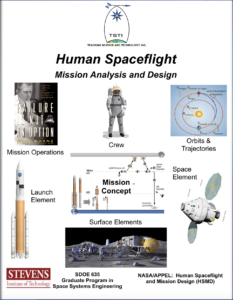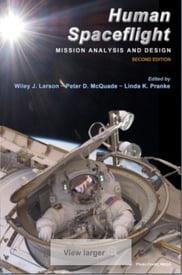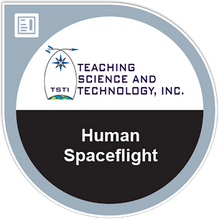This course is available with a live instructor
onsite or through a virtual platform.
COMING SOON: This course is also available
prerecorded, working at your own pace.
Course Description:
This course provides the conceptual framework for developing human space missions starting from basic mission objectives through architecture development and operations. The course is organized around the human space mission analysis and design process. The course aims to equip each participant with the practical tools to complete a conceptual design of human space mission and analyze the impacts of evolving requirements. Safety and mission assurance for human missions is examined as a critical objective. Human factors issues of physiology and performance are also explored to understand how best to ensure optimum crew performance and health. Design exercises are conducted to give first-hand experience with the techniques presented and gain experience with mission design trade-offs. This course is designed for program managers, engineers and scientists who need to understand the technical challenges involved in designing human space missions.
At the end of this course you will be better able to tie mission elements together to describe tradeoffs between human spaceflight system design and mission operations. You will examine human space mission design using a systems engineering approach to translating space mission objectives, requirements, and constraints into viable and cost-effective systems and operations concepts. At the end of this course, you will be able to…
- ✦ Interpret and convert space mission objectives, requirements, and constraints into visible and cost-effective operations concepts
- ✦ Understand the space environment and its impact on humans and hardware
- ✦ Explain the physiology of space flight, human factors, and psychological aspects
- ✦ Describe a process-oriented approach for creating cost-effective space missions
- ✦ Describe the key functions that must be performed for mission operations
- ✦ Apply effective methodology for translating space mission objectives, requirements, and designs into viable and cost-effective operations concepts
- ✦ Explain the interrelationships and tradeoffs between system design and mission operation
✦ Module 1: Mission Design
• Designing Human Space Missions
• Safety of Human Space Missions
• Space Environments
✦ Module 2: Crew
• Physiology of Human Spaceflight
• Human Factors and Psychology
• International Crewed Missions
✦ Module 3: Orbits and Trajectories
• Understanding Orbits and Maneuvers
• Describing and Using Orbits
• Orbit Maneuvering and Rendezvous
• Entry, Descent, Landing and Ascent
✦ Module 4: The Space Element
• Designing and Sizing Space Elements
• Designing and Sizing Transfer Vehicles
• Cost Estimating
✦ Module 5: Support Subsystems
• Thermal Control
• Environmental Control and Life Support
• Crew Accommodation
• ADCS/GNC
• Electrical Power
• Data Handling
• Structures
• Space Propulsion
• EVA systems
✦ Module 6: Mission Operations Element
• Mission Operations
• Command, Control and Communications (C3)
• Logistics Support
• In-Situ Resources
✦ Case Studies
• Project: Mars
• ISS
• Commercial Crew
• Lunar Outpost
✦ Threaded Case Study and Hands-on Exercises




